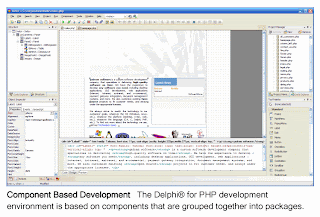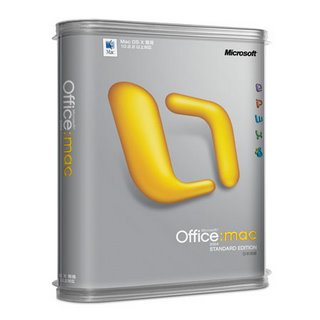 I was chatting with a colleague here at BZ Media’s New York headquarters office (I’m based near San Francisco, but trek out to NY every few months) about how companies react to negative coverage… and remembered this gem from The SCO Group last summer.
I was chatting with a colleague here at BZ Media’s New York headquarters office (I’m based near San Francisco, but trek out to NY every few months) about how companies react to negative coverage… and remembered this gem from The SCO Group last summer.
The June 12, 2006, edition of SD Times News on Monday, an e-mail newsletter, carried a “Zeichick’s Take” column entitled “It’s Time for Darl to Go.” I wrote:
In its relentless drive toward ever-bigger losses, The SCO Group passed a milestone with its most recent quarterly earnings: Its losses exceeded the ongoing costs of its famous intellectual-property litigation. That means that even stopping the soap-opera legal proceedings wouldn’t return the company to profitability.
The numbers are grim. For the quarter ending April 30, 2006 (whose numbers were released this week), SCO lost US$4.69 million on sales of $7.13 million. That compares pretty badly with the same quarter in 2005, where SCO lost $1.96 million on sales of $9.25 million.
According to the company’s financial reports, “Legal and other expenses incurred in connection with the Company’s litigation with IBM were $3,762,000 for the second quarter of fiscal year 2006. Because of the unique and unpredictable nature of this litigation, the occurrence and timing of certain expenses is difficult to predict, and will be difficult to predict for the upcoming quarters.”
Further, the company says that the last year it was profitable was in the four quarters ending on Oct. 31, 2003—and that the company’s accumulated deficit has reached $236 million. The company’s piggy bank is getting low, too. SCO reports that cash, cash equivalents and available-for-sale marketable securities now stand at only $18.62 million, down over a million dollars over the past three months.
No matter how you slice it, SCO is crashing and burning.
If you read through the company’s own financial documents, the business is fraught with peril. On June 5, the company released a prospectus for the sale of about 2.1 million shares of common stock by some stockholders (SCO itself wouldn’t see any of the proceeds.) The prospectus admits that “We do not have a history of profitable operation,” among other things, and provides a laundry list of reasons why SCO is, basically, a bad bet. A terrible bet.
The question remains: What are the owners of SCO going to do about this? Are they going to let Darl McBride, their president, CEO and chief champion of this ruinous legal fight, destroy the business? Maybe SCO’s lawsuit has legal merit (I don’t know—I’m not a lawyer), but despite the genuine innovations that SCO’s developers have created, the company is a pariah and a disaster.
It’s time for management changes. The current board of directors consists of McBride, R. Duff Thompson, Ralph J. Yarro III, J. Kent Millington, Omar Leeman, Edward E. Iacobucci, Darcy Mott and Daniel W. Campbell. Gentlemen, it’s time to perform your fiduciary responsibilities to your shareholders—and fire Darl McBride.
SCO’s reaction was swift and hilarious. They didn’t contact me or any of the other editors, but their then-head of corporate communications, Blake Stowell, wrote to one of SD Times’ advertising sales representatives:
I know there is supposed to be a very concrete line between the advertising staffs and editorial staffs of publications, but when SD Times puts out an article like this at the very time that we are looking to possibly do something to market to the developers that subscribe to your publication, it seems EXTREMELY counter-intuitive for us to do ANYTHING at all with SD Times. Any campaign we might do with your readership would fall on deaf ears and be a complete waste of our money after an editorial like this one.
After conferring with me, our sales rep responded to Blake,
One of the reasons SD Times is valuable to readers (and the industry) is because of its independent view and editorial, given much of our coverage is on vendors and their products. An editorial opinion in our email newsletter by no means indicates all our readers agree or disagree. I respectfully submit that your advertising message with SD Times would strengthen your position with our readers and the industry. As you know, all companies face adversity as a part of their progress, but having a continued presence and consistent message will endure in the minds of consumers.
Please do not forgo reaching a readership that can make a difference in your business. Again, I understand your position and your hesitation to proceed with an advertising campaign with us. My hope is that I can communicate to you the integrity we have as a news organization, the value and importance of our product and our audience, and most importantly, how we can help you grow as a company.
The follow-up came from another person with SCO. This person is not named because he’s still at SCO; Blake left a few months ago:
My challenge as director of SCO Marketing is that I’m ready to launch a significant campaign and had the SD Times at the top of our list for an integrated campaign. While the previous coverage is appreciated, what is seared in minds here is the latest message from your magazine and it has made it a VERY hard sell for me to convince executive management to let me use SD Times, even though it is probably the best vehicle for me to use. To have a magazine call for the removal of our CEO makes my job a whole lot harder internally and externally. At this point, I’ve been told to look at several other alternatives.
That was the end of the conversation… and you know, I haven’t seen that “significant campaign” appear anywhere. Maybe they really were planning something big, but my call for Darl’s removal scuttled their entire marketing program. Or maybe these were empty words intended to punish SD Times and attempt to ensure that future opinion essays and editorial coverage would be more positive.
Another day in the life of a publishing company… and I still think that SCO should fire Darl McBride.





























